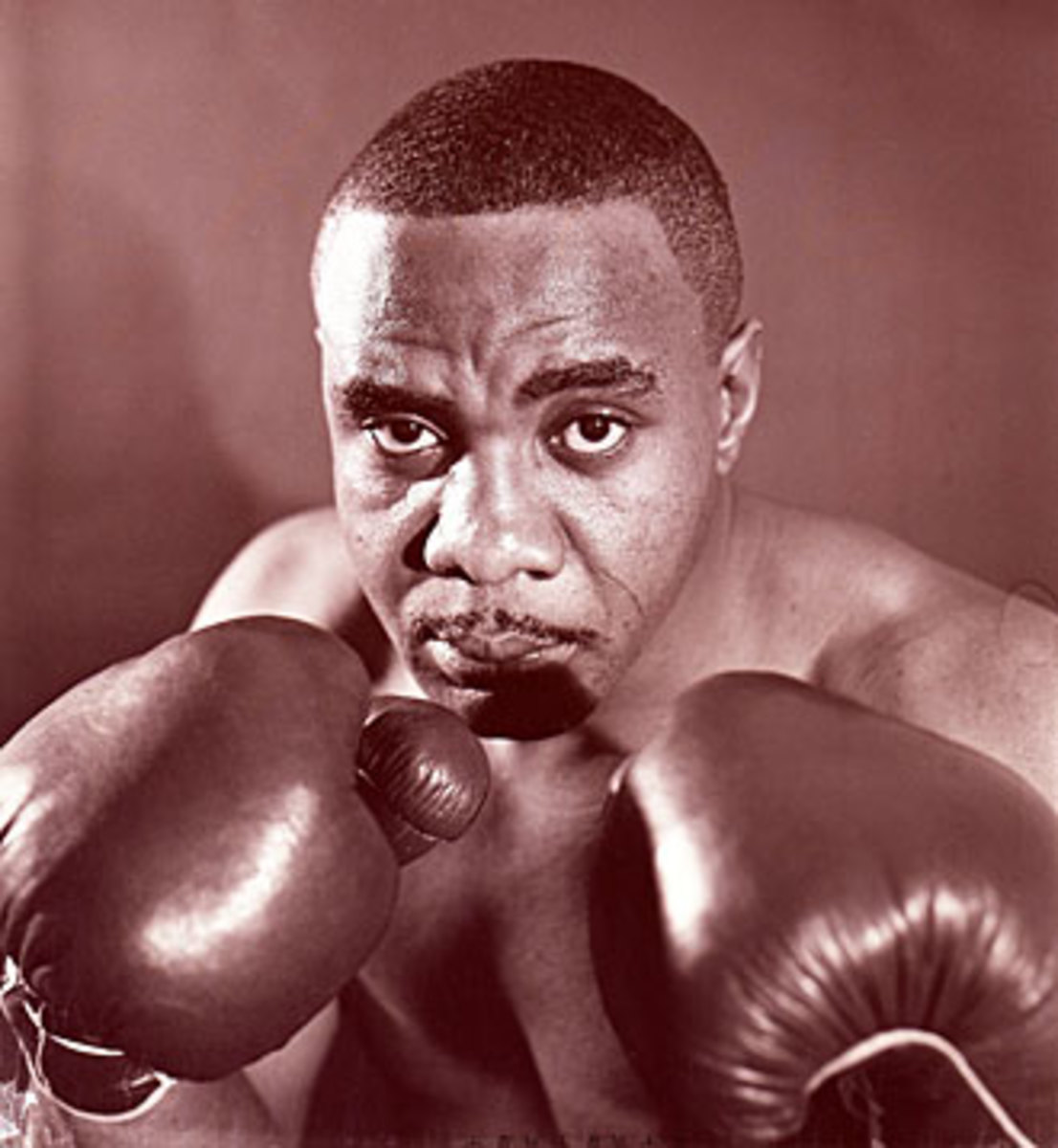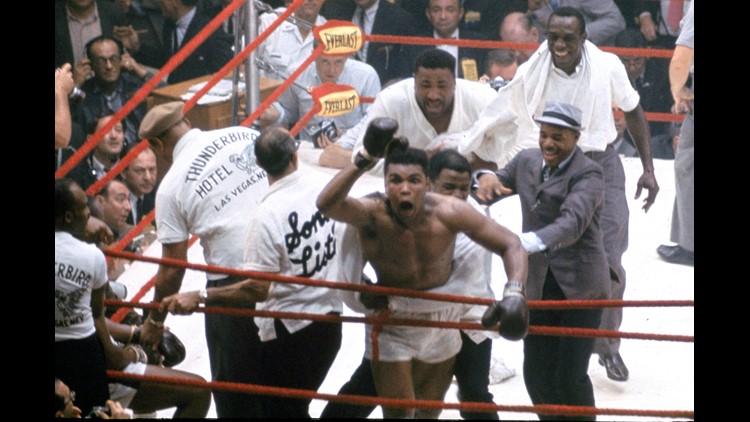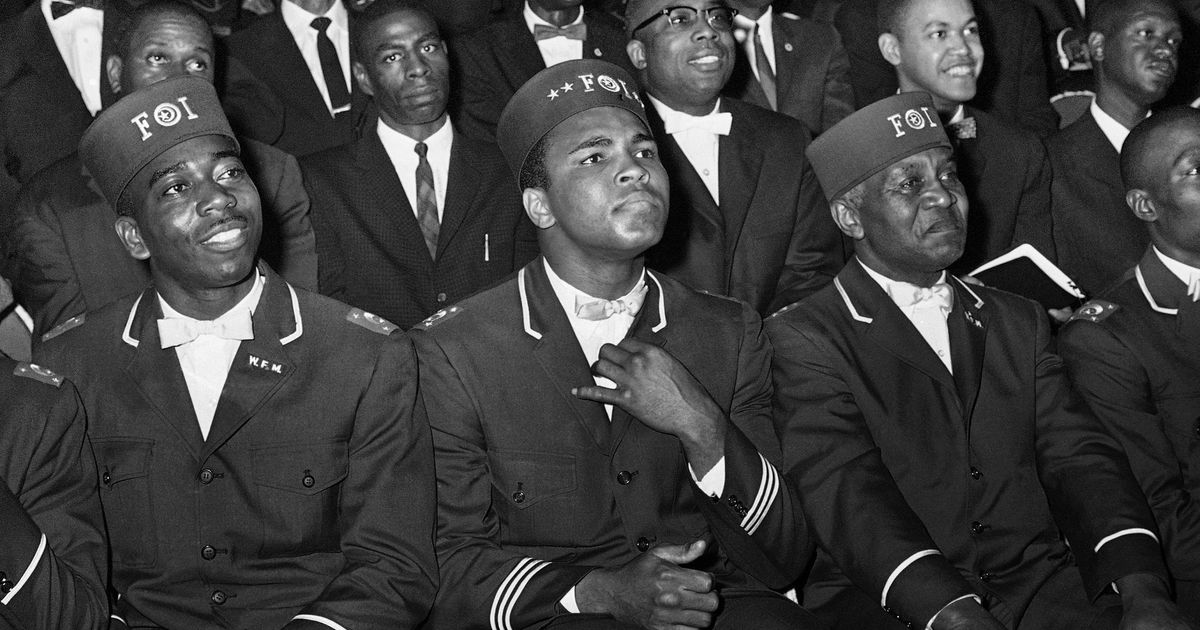By: Zachary Draves
In February 1964, America was in a state of uncertainty with elements of tension and frustration towards the status quo brewing to the surface.
The previous year saw the murder of civil rights activist Medgar Evers, the March on Washington, and the murders of four little girls in Birmingham, Alabama at the 16th street Baptist Church. All of which galvanized the civil rights movement.
Then in November, there was the assassination of President John F. Kennedy and with the ongoing Cold War threat posed by the Soviet Union, America was feeling more vulnerable than ever.
It was against that backdrop that a young brash heavyweight fighter named Cassius Clay out of Louisville, Kentucky emerged as a vibrant talent on the boxing scene.

(Courtesy: Dan Grossi/Associated Press)
He had won the Olympic gold medal four years prior in Rome and won his first nineteen professional fights, fifteen by knockout. Beyond the ring, his irreverent charisma and boastful banter garnered him the nickname of the “Louisville Lip.”
Now he stood on the precipice of becoming the heavyweight champion of the world when he signed to fight the reigning champion Sonny Liston in Miami Beach on February 25, 1964.

(Courtesy: Mark Kauffman/Sports Illustrated)
Liston was arguably the most feared fighter of his day. He pummeled his opponents into perpetual oblivion with his ferocious punches and intimidating demeanor.
In September 1962, he fought Floyd Patterson for the heavyweight crown and dispatched him in the first round by knockout. They fought again in July 1963 and it was the same result, a first-round knockout.
By February 1964, Liston had amassed a record of 35-1 and had defeated eight out of ten title contenders, seven by knockout. Outside the ring, his intimidating presence was in large part due to his background of being a convicted felon who had served time for armed robbery and assaulting a police officer.
He was also under the tutelage of one-time mob hitman Frankie Carbo of the notorious Lucchese crime family. Given the mob’s deep involvement in boxing at the time, Liston was looked at with fear and suspicion in more ways than one.
Going into the fight, virtually nobody gave Cassius Clay a prayer in the world.
In order to compensate for any weaknesses in the areas of experience and strength, Clay would engage in psychological warfare against Liston in public. He would often go on poetic and boastful rants about how he was “young, fast, pretty, and can’t possibly be beat.”
He also labeled Liston as “the bear” and that he was “too ugly to be the world champ”.
Clay wrote and recited a poem predicting the outcome of the fight.
Clay comes out to meet Liston and Liston starts to retreat,
If Liston goes back an inch farther he’ll end up in a ringside seat.
Clay swings with a left,
Clay swings with a right,
Just look at young Cassius carry the fight.
Liston keeps backing but there’s not enough room,
It’s a matter of time until Clay lowers the boom.
Then Clay lands with a right, what a beautiful swing,
And the punch raised the bear clear out of the ring.
Liston still rising and the ref wears a frown,
But he can’t start counting until Sonny comes down.
Now Liston disappears from view, the crowd is getting frantic
But our radar stations have picked him up somewhere over the Atlantic.
Who on Earth thought, when they came to the fight,
That they would witness the launching of a human satellite.
Hence the crowd did not dream, when they laid down their money,
That they would see a total eclipse of Sonny.
Despite the brooding confidence and episodic moments of comical craziness, Clay was a huge underdog and some were suspecting that he would be so badly beaten by Liston that he would immediately be sent to the hospital.
One of those worried was a young up-and-coming sports writer for the New York Times named Robert Lipsyte.
At the time, being the boxing writer for the Times was a big deal. But with many anticipating a first-round knockout, they didn’t send anyone to cover the fight until Lipsyte took on what was supposed to be a simple task.
“My instructions were very specific, as soon as I got to Miami, I had to drive back and forth from the arena and the nearest hospital,” he said in a phone interview with Team NBS Media.
During his pre-fight coverage on February 18, Lipstye found himself at the 5th Street Gym in Miami Beach to watch Clay train, but he hadn’t shown up yet. He found himself alongside four young white guys from Britain who were waiting to take part in a photo op with Clay.
Their names were John Lennon, Paul McCartney, Ringo Starr, and George Harrison, better known as The Beatles.
They had just arrived in America and had just completed their first major performance on the Ed Sullivan Show which drew over 64 million television viewers and unleashed the British Invasion.
According to Lipsyte, they had a previous photo-op with Liston who later said “I’m not taking a photo with those sissies.”
Then as he was covering Clay, one thing led to another and Lipstye found himself alone in a dressing room with The Beatles.
“These two big security guards pushed these four little guys (the Beatles) into an abandoned dressing room,” he said. “I get pushed in with them. John said “I’m Ringo”. I asked them who they think was going to win. It was John that said “he (Liston) is going to knock the little ranker (Clay) out”.
Then Clay finally arrived, opened the door up, and said “Let’s go Beatles and make some money!”

(Courtesy: Youtube)
Afterward, Lipsyte was in Clay’s dressing room.
“He beckoned to me and said “who were those little sissies?” he recalled.
If that wasn’t enough, Clay was entering the fight under his own cloud of suspicion due to his association with Malcolm X of the Nation of Islam, an organization that promoted Black Nationalism and Separatism under the leadership of the Honorable Elijah Muhammad.

(Courtesy: Associated Press(
Clay being surrounded by a man and group that was looked at with perplexity by some and with fear by others created all swarms of confusion as to who he really was.
Then came February 25 and from the moment both fighters stepped into the ring at the Miami Beach Convention Center, all conventional wisdom went out the window.
“The first inkling we were wrong was when they came into the ring, how much bigger Cassius Clay was than Sonny Liston” said Lipsyte. “He was taller, he was broader, and he was a bigger man. We had been trapped into this David and Goliath story.”
From the opening bell, Clay was the better and more dynamic fighter. He moved around the ring, laid down some tremendous punishment towards Liston, and Liston couldn’t keep up with him.

(Courtesy: AP Photo)
Then in the 5th round the tide started to turn on the most bizarre of circumstances as Clay went to his corner complaining that something smeared on Liston’s gloves got into his eyes and that he couldn’t see.
He was telling his trainer Angelo Dundee to “cut the gloves off’ but Dundee refused.
Eventually Clay got back in the ring and continued to pummel Liston to the point that Liston’s face began to swell. That plus complaints about a hurt shoulder was all that Liston could take and he refused to come out for the 8th round.

(Courtesy: AP Photo
Twenty-two-year-old Cassius Clay shook up the world and became the heavyweight champion.
“That was that, “said Lipsyte. “Suddenly we had a new heavyweight champion with all the baggage of the political 60s.”
At the post fight press conference, the perceived self-aggrandizing chatter on the part of Clay was gone.
“Cassius was very gentle, ” said Lipsyte “He said everything he had done was to hype the box office and he could be this polite and honorable heavyweight champion.”
On March 6, he had completed a hidden transformation by proclaiming his membership in the Nation of Islam and changing his name to Muhammad Ali.

(Courtesy: AP Photo/Paul Cannon)
At the height of the civil rights movement when Dr. Martin Luther King Jr. and allies were advocating for integration, Ali took the opposite route and many including Lipstye didn’t know what to make of it.
“Most of us were integrationists and everything suddenly became clear, he said. “All of sudden he became a political and religious icon of the 60s, a messenger of resistance.”
Ali’s legacy as both a fighter and activist soon followed and has become a special part of history.
As part of this folklore, Ali is said to have had a private meeting with Malcolm X, football player Jim Brown, and soul singer Sam Cooke in a motel in Miami after defeating Liston the first time. The story, which would later be turned into an Oscar nominated movie One Night in Miami directed by Regina King, is that they were huddled together to talk about the responsibility as prominent black men to be at the forefront for liberation.
It was out of that supposed meeting that Ali completed his transformation and presented himself as how we came to be known.
Nobody knows for sure if the meeting took place including Lipsyte.
“I wasn’t there so I can’t attest that it did happen, he said. “It could have happened. Malcolm was there. I expect Jim was there. I think it really in many ways captured the moment in the same way great literature, War and Peace, where all those people together in the room? It gave us the moment and I think that’s what it did. “
“Being with people like Sam Cooke, Jim Brown, and Malcolm X was part of his education. He emerged as this fabulous persona by learning from other people.”
He and Liston fought the last time in February 1965 in Lewiston, Maine. Ali defeated Liston in the first round on the so called “phantom punch” which drew speculation as to whether Liston tanked the fight due to his associations with the mob.
Liston died under mysterious circumstances on December 30, 1970 at the age of 38.
Their first fight was more than just a fight.
It was according to Lipsyte the official beginning of a decade that changed the course of history in more ways than one and for him it began a long illustrious career in sports writing that included extensive coverage of the man who had come to define said decade.
“It was career changing for me,” he said. “Besides the fact that it was an enormously historical event, this was the time when the real 60s began.”
Muhammd Ali, The Beatles, Malcolm X, possibly Sam Cooke and Jim Brown, and Robert Lipsyte all within the same vicinity at one moment in history.
How much more 60’s can that be?